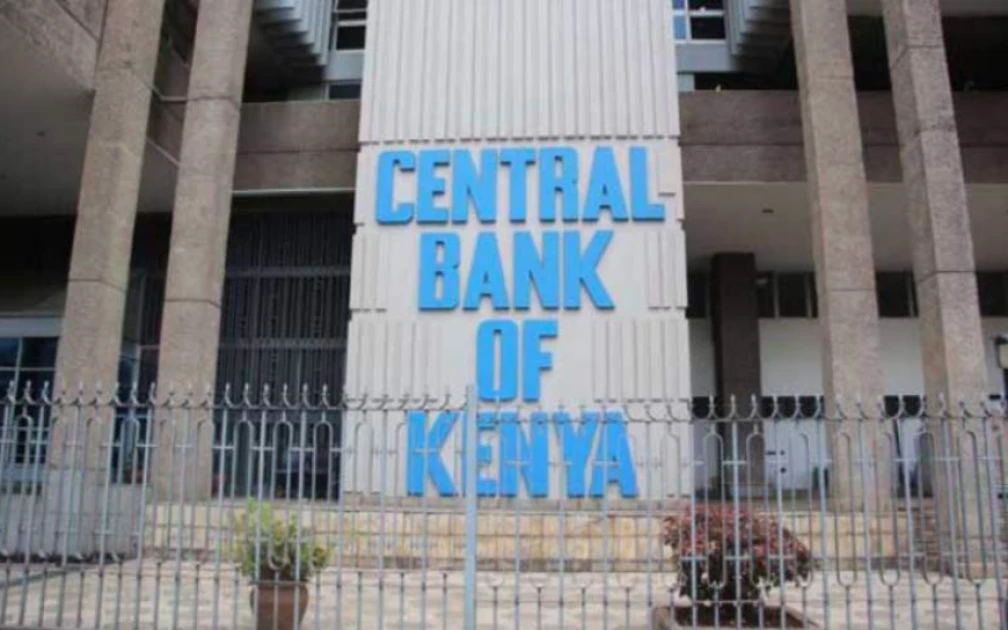The Central Bank of Kenya (CBK) has reported a decline in Treasury bill rates across all tenors, marking a calculated policy maneuver aimed at stimulating borrowing and investment while cushioning the economy from global financial turbulence. According to the Weekly Bulletin released on September 26, 2025, the 91-day, 182-day, and 364-day bills settled at 7.914%, 7.985%, and 9.533% respectively, levels that point to an easing trend as the regulator tries to create momentum for growth.
The move followed the September 25 Treasury bill auction, which attracted KSh 15.1 billion against an advertised KSh 24 billion, translating to a modest 62.9% subscription rate. While the underperformance raised eyebrows, the CBK’s decision to accommodate lower yields suggests a balancing act between investor appetite and the government’s borrowing strategy.
Build the future you deserve. Get started with our top-tier Online courses: ACCA, HESI A2, ATI TEAS 7, HESI EXIT, NCLEX-RN, NCLEX-PN, and Financial Literacy. Let Serrari Ed guide your path to success. Enroll today
The Auction and Shifting Market Signals
Treasury bills, Kenya’s short-term government securities, remain a critical tool for raising domestic financing while providing investors with safe, liquid instruments. However, the latest auction revealed tepid demand, with investors cautious at prevailing rates.
The central bank reported that despite fewer bids, the money market itself remained flush with liquidity. Interbank transactions surged to an average of 31 deals valued at KSh 17.2 billion, more than double the KSh 7.9 billion recorded the previous week. This liquidity suggests that while cash was available, investors were selective, waiting for yields to align better with perceived risk.
Analysts note that such cautious behavior often arises when investors anticipate further rate cuts or when alternative assets such as infrastructure bonds appear more attractive. Indeed, CBK has increasingly leaned on longer-dated infrastructure bonds, which are tax-exempt and carry higher coupons, making them popular among institutional investors.
Domestic Bond Market vs Equity Market
The bulletin also highlighted contrasting trends across markets. Domestic bond turnover fell by 6% in the week ending September 25, a sign of hesitancy among fixed-income investors. Rising global yields, particularly on emerging market debt, may have fueled caution locally, with investors reassessing risk-return trade-offs.
In contrast, the Nairobi Securities Exchange (NSE) showed signs of resilience. The NASI index rose by 1.6%, while the NSE 25 and NSE 20 indices gained 1.7% and 1.0% respectively. Market capitalization grew in tandem, with equity turnover climbing 12.1%. This divergence indicates a rotation of capital, with some investors favoring equities as global rate pressures dampened appetite for bonds.
Global Pressures and External Shocks
CBK’s easing stance must also be read in light of international developments. The U.S. Dollar Index strengthened by 1.2% in the review period, putting pressure on frontier market currencies like the shilling. Meanwhile, Kenya’s Eurobond yields rose by 18.5 basis points, reflecting investors’ heightened caution toward emerging markets amid global monetary tightening.
Despite these pressures, Kenya’s external buffers remain stable. The country’s foreign exchange reserves stood at KSh 1.402 trillion, equivalent to 4.7 months of import cover, comfortably above statutory thresholds. The CBK emphasized that reserves are “adequate” to protect the economy from external shocks, though further global volatility could still test resilience.
One positive factor has been the stability in oil prices. Murban crude averaged $69.85 per barrel on September 25, only marginally lower than the previous week’s $69.95. Stable energy costs have helped temper inflation, giving policymakers more room to focus on stimulating domestic activity.
Monetary Policy Context
The decline in T-bill rates complements CBK’s broader monetary easing. In August 2025, the Monetary Policy Committee executed its seventh consecutive rate cut, lowering the policy rate by 25 basis points to 9.50%. According to a Reuters report, inflation was trending within target, enabling CBK to maintain its growth-friendly stance.
At the short end, yields have shifted down markedly. The 91-day T-bill fell below 8% for the first time since 2022 earlier this month, as highlighted by Soko Directory. Back in June, yields were still above 9% and in some cases approaching double digits. The shift signals not only monetary easing but also strong investor demand for safe short-term assets at lower yields.
At the longer end, CBK has relied heavily on reopened infrastructure bonds. In June, for example, the Treasury successfully raised KSh 71.6 billion through a dual-tranche bond reopening against a target of KSh 50 billion, as reported by Kenyan Wall Street. These instruments, exempt from taxes and designed for infrastructure funding, have consistently outperformed short-term bills in attracting investor interest.
One decision can change your entire career. Take that step with our Online courses in ACCA, HESI A2, ATI TEAS 7, HESI EXIT, NCLEX-RN, NCLEX-PN, and Financial Literacy. Join Serrari Ed and start building your brighter future today.
Implications for the Economy
Borrowers and Credit Growth
Lower Treasury bill yields should gradually translate into reduced borrowing costs for corporates and households. Commercial banks use government paper as a benchmark for pricing loans, meaning lower T-bill rates may soften lending rates over time. This could encourage businesses to expand credit uptake, spur investment, and stimulate economic activity.
Investors and Fund Managers
For investors, the immediate effect is compressed yields. Money Market Funds (MMFs), which rely heavily on T-bills for returns, face shrinking margins. Some have already flagged weaker returns, as reported by Nyakundi Report. With rates slipping below 10%, MMFs may struggle to deliver the double-digit yields that have traditionally made them popular.
Fund managers may thus pivot toward longer-term securities, including infrastructure bonds and corporate debt, to maintain returns. This shift could rebalance the fixed-income landscape, with implications for liquidity and secondary market turnover.
Government Borrowing Costs
For the Treasury, declining yields are a welcome relief. Kenya’s debt servicing burden has been mounting, and lowering domestic borrowing costs frees up fiscal space. However, the under-subscription in recent auctions raises concerns: if investors hold back despite lower rates, the government may need to rethink issuance strategies to ensure financing needs are met.
Risks and Challenges
While the easing stance has merits, it is not without risks:
- Capital Outflows: Rising U.S. and European yields could prompt investors to exit frontier markets, weakening the shilling and pressuring reserves.
- Inflationary Pressures: Should oil prices spike again or food inflation rise, the CBK may have limited space to continue easing.
- Debt Sustainability: While lower yields reduce borrowing costs, Kenya’s overall debt burden remains high. Sustained reliance on domestic markets could still strain fiscal sustainability.
- Investor Confidence: If auctions continue underperforming, confidence in government securities could erode, forcing CBK and Treasury to recalibrate.
Looking Ahead
Key Metrics to Watch
- Upcoming Treasury auctions: Will lower rates attract stronger subscription in October and beyond?
- CBK MPC meetings: The next policy stance will reveal whether easing continues or pauses.
- Inflation data: Especially food and energy, which could reverse the easing narrative.
- Global market sentiment: Rising Eurobond yields and a strong U.S. dollar remain critical risks.
Strategic Policy Balance
Kenya’s strategy rests on a dual approach: easing domestic conditions while safeguarding external stability. By lowering T-bill rates but keeping reserves strong, CBK hopes to stimulate growth without undermining market confidence.
As noted by Kenyan Wall Street, investor appetite has already been shifting toward longer-dated, higher-yield securities. Policymakers may therefore need to rely more heavily on infrastructure bonds and medium-term instruments to strike the balance between affordability and attractiveness.
Conclusion
The CBK’s decision to let Treasury bill rates fall across all tenors underscores its commitment to stimulating growth amid a volatile global backdrop. With short-term yields now under 8% for the first time in years and borrowing costs easing, the central bank is clearly signaling confidence in Kenya’s ability to sustain low inflation while promoting investment.
Yet challenges remain. Global headwinds—from strengthening dollar dynamics to rising Eurobond yields—could quickly test Kenya’s resilience. For investors, the new era of lower T-bill returns may necessitate recalibration toward longer-term or riskier assets. For the government, ensuring strong auction performance while containing debt risks will be key.
Ultimately, the September 2025 bulletin reflects a financial system at a crossroads: leaning into growth-supportive policy, but mindful of the thin line between opportunity and vulnerability.
Ready to take your career to the next level? Join our Online courses: ACCA, HESI A2, ATI TEAS 7 , HESI EXIT , NCLEX – RN and NCLEX – PN, Financial Literacy!🌟 Dive into a world of opportunities and empower yourself for success. Explore more at Serrari Ed and start your exciting journey today! ✨
Track GDP, Inflation and Central Bank rates for top African markets with Serrari’s comparator tool.
See today’s Treasury bonds and Money market funds movement across financial service providers in Kenya, using Serrari’s comparator tools.
Photo source: Google
By: Montel Kamau
Serrari Financial Analyst
2nd October, 2025
Article, Financial and News Disclaimer
The Value of a Financial Advisor
While this article offers valuable insights, it is essential to recognize that personal finance can be highly complex and unique to each individual. A financial advisor provides professional expertise and personalized guidance to help you make well-informed decisions tailored to your specific circumstances and goals.
Beyond offering knowledge, a financial advisor serves as a trusted partner to help you stay disciplined, avoid common pitfalls, and remain focused on your long-term objectives. Their perspective and experience can complement your own efforts, enhancing your financial well-being and ensuring a more confident approach to managing your finances.
Disclaimer: This article is for informational purposes only and does not constitute financial advice. Readers are encouraged to consult a licensed financial advisor to obtain guidance specific to their financial situation.
Article and News Disclaimer
The information provided on www.serrarigroup.com is for general informational purposes only. While we strive to keep the information up to date and accurate, we make no representations or warranties of any kind, express or implied, about the completeness, accuracy, reliability, suitability, or availability with respect to the website or the information, products, services, or related graphics contained on the website for any purpose. Any reliance you place on such information is therefore strictly at your own risk.
www.serrarigroup.com is not responsible for any errors or omissions, or for the results obtained from the use of this information. All information on the website is provided on an as-is basis, with no guarantee of completeness, accuracy, timeliness, or of the results obtained from the use of this information, and without warranty of any kind, express or implied, including but not limited to warranties of performance, merchantability, and fitness for a particular purpose.
In no event will www.serrarigroup.com be liable to you or anyone else for any decision made or action taken in reliance on the information provided on the website or for any consequential, special, or similar damages, even if advised of the possibility of such damages.
The articles, news, and information presented on www.serrarigroup.com reflect the opinions of the respective authors and contributors and do not necessarily represent the views of the website or its management. Any views or opinions expressed are solely those of the individual authors and do not represent the website's views or opinions as a whole.
The content on www.serrarigroup.com may include links to external websites, which are provided for convenience and informational purposes only. We have no control over the nature, content, and availability of those sites. The inclusion of any links does not necessarily imply a recommendation or endorsement of the views expressed within them.
Every effort is made to keep the website up and running smoothly. However, www.serrarigroup.com takes no responsibility for, and will not be liable for, the website being temporarily unavailable due to technical issues beyond our control.
Please note that laws, regulations, and information can change rapidly, and we advise you to conduct further research and seek professional advice when necessary.
By using www.serrarigroup.com, you agree to this disclaimer and its terms. If you do not agree with this disclaimer, please do not use the website.
www.serrarigroup.com, reserves the right to update, modify, or remove any part of this disclaimer without prior notice. It is your responsibility to review this disclaimer periodically for changes.
Serrari Group 2025












